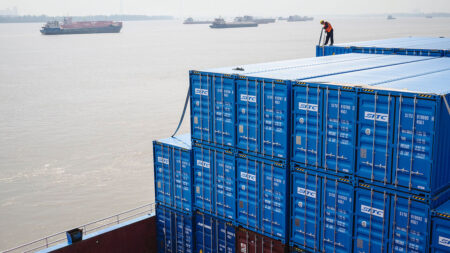As the geopolitical landscape shifts rapidly across Asia, East Africa, and the Gulf region, leaders in these areas are confronted with a challenging and often uncomfortable choice regarding their foreign policies and domestic strategies. This complexity arises from various global dynamics, including economic pressures, security concerns, and the shifting alliances prompted by major powers like the United States, China, and Russia.
In Asia, the rise of China as a formidable economic powerhouse has forced neighboring countries to reassess their positions. Nations such as India, Japan, and Southeast Asian states must navigate their relationships with China while collaborating with the United States to maintain a balance of power in the region. This push-and-pull dynamic complicates fundamental relationships, as countries strive to engage with China for economic benefits while simultaneously aligning with the U.S. for security assurances. The South China Sea, for example, remains a contentious area where territorial disputes and military engagements threaten to escalate conflicts.
Similarly, in East Africa, leaders face a precarious situation marked by internal strife and external interventions. Countries like Ethiopia, Kenya, and Somalia are grappling with multifaceted challenges, including ethnic tensions, insurgencies, and the impact of climate change on food security. The influence of foreign powers, particularly China, has grown in this region, as investments in infrastructure through initiatives like the Belt and Road Initiative create dependency but also push other nations to align with different strategies. Furthermore, the competition for resources exacerbated by the East African Rift and the growing need for water could lead to conflicts if not managed carefully.
The Gulf states, particularly Saudi Arabia, the United Arab Emirates, and Qatar, face their own unique dilemmas. With the backdrop of ongoing political unrest and changes in U.S. foreign policy, including a pivot towards Asia, these countries are forced to redefine their foreign relations. The specter of Iran looms large in their regional calculations, as nuclear negotiations and military provocations shape their security strategies. Additionally, these states must navigate their alliances with both the West and the burgeoning economic ties with China, which seeks to expand its influence in energy markets.
As leaders in all these regions contemplate their choices, several key factors come into play. Firstly, the war in Ukraine has dramatically shifted energy dynamics, causing countries to reconsider their energy dependencies and alliances. The Gulf states, for example, stand at a crossroads between maintaining their historic partnerships with the West and exploring burgeoning ties with non-Western powers. Furthermore, the ongoing U.S.-China rivalry adds an additional layer of complexity, forcing leaders to choose between the traditional alliances of the post-World War II order and emerging powers.
Secondly, economic recovery post-pandemic plays a pivotal role in shaping these decisions. Countries are in dire need of investments and trade partnerships to stabilize their economies. The influence of multinational corporations and foreign direct investment from various countries can force leaders to navigate a labyrinth of interests, often resulting in compromises that might not align with their national interest.
Lastly, the internal socio-political contexts within these regions cannot be overlooked. The pressure from civil society, the demands for democracy, and the impact of youth-led movements pose challenges for leaders who must balance domestic stability with international demands. In some instances, authoritarian regimes might lean towards isolationism, while more democratic states might pursue open engagement with foreign powers.
In conclusion, the unpleasant choices facing leaders in Asia, East Africa, and the Gulf are multifaceted and fraught with potential consequences. The interplay of national interests, regional rivalries, and global power dynamics creates a complex web that requires pragmatic approaches and, often, difficult compromises. As these leaders move forward, their decisions will not only shape their countries’ futures but also influence broader regional stability and global dynamics. The stakes have never been higher as they seek to chart a sustainable path amidst these turbulent waters.












